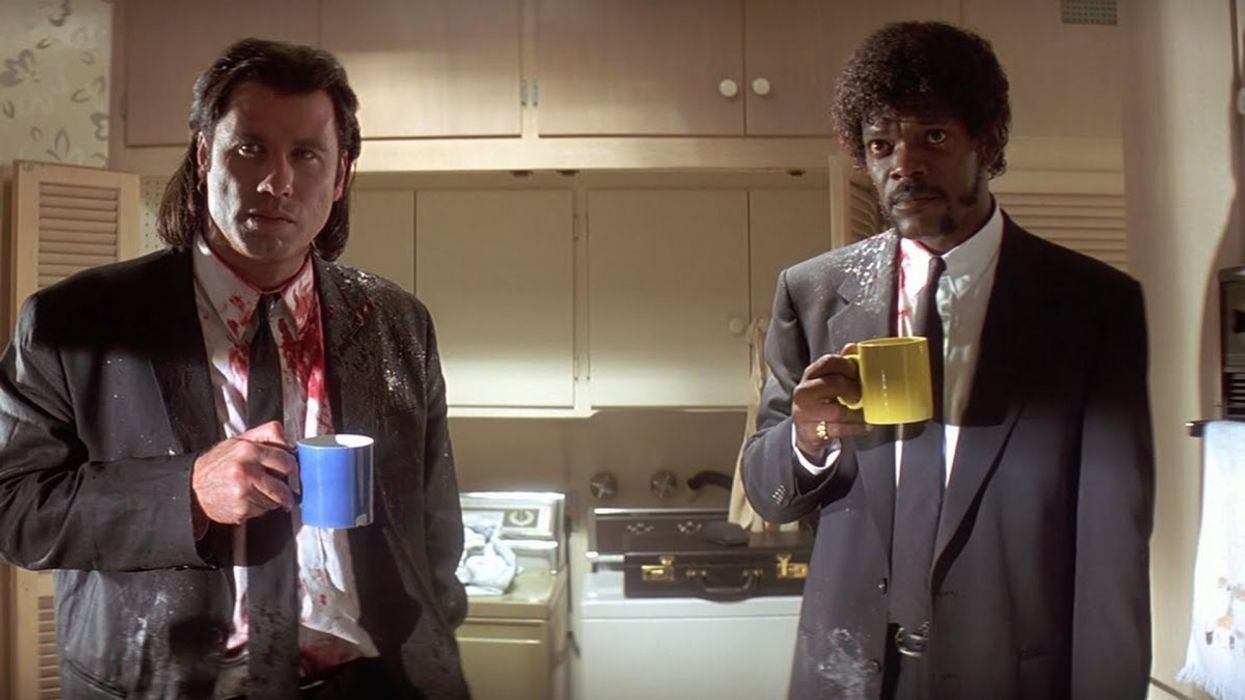Tarantino Explains Nonlinear Storytelling in this 'Pulp Fiction' Video Essay
Quentin Tarantino's 1994 crime film challenged the status quo. Let him tell you how he did it.

"Any time of the day is a good time for pie," as Fabienne says, but any time of day is also good for Pulp Fiction.
When Pulp Fiction came out, no one had seen anything quite like it. Its grisly storylines are told out of order and intertwine in amazing ways. The characters are big, funny, memorable, and in a couple of cases, insane.
And several of the film's moments have become iconic—everyone knows the dance at Jack Rabbit Slim's or that scene with the adrenaline shot.
This week, CinemaStix compiled some of Tarantino's Pulp Fiction insights into a video essay that explores everything that makes this groundbreaking film unique.
Watch the video below, then dive into the key takeaways!
The Structure
Pulp Fiction starts at the end and then takes the audience through a winding journey through several perspectives. Tarantino acknowledges that this approach doesn't always work. Sometimes it's just more impactful to follow a story in a linear way.
But what if you have an idea that feels kind of basic or clichéd? Maybe nonlinear storytelling is the spin you need.
"The whole idea of Pulp Fiction was the idea I was going to do three crime stories," Tarantino says. "Kinda like the stories you've seen a zillion times before, but I was just going to take them in different ways. Let real life intrude on genre."
Tarantino keeps these storylines from feeling episodic because he makes sure they all overlap in some way. Characters that may be the lead in one plotline appear as side characters in another, acting as each part's connective tissue.
Why not take a look at our advice for writing nonlinear screenplays?

The Importance of Pop Culture
Tarantino's dialogue scenes aren't always exactly true to life, but he does make a point to let characters sometimes talk about the mundane.
For instance, young Tarantino spent some time in Europe while writing this film, and that element of his real-life sneaks in as his hitmen famously discuss food differences in France.
To Tarantino, it was important that his characters were able to talk about their lives and interests, which are usually things from pop culture that Tarantino also likes. He points to Elmore Leonard and Barry Levinson as big inspirations for his dialogue.
Be careful if you try doing this yourself! Don't let your characters just ramble on about anything that pops into your head. Make sure that these conversations inform the characters, too, and add to the audience's understanding of them. Keep the conversations energetic and tense so they don't drag the pace down.
When you've got your dialogue scenes down, make sure you also know how to shoot and edit them.

What's next? Check out more writing tips from Tarantino
We look at why Tarantino's dialogue is always so great, and here's his best screenwriting advice. Then take a look at how he tackles his first drafts.
Source: CinemaStix












